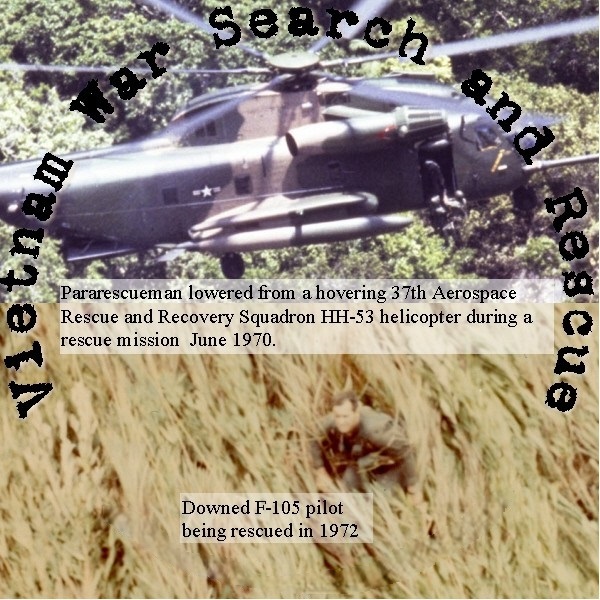
Description
Vietnam War Search and Rescue: A Timeline and Personnel
Detailed Timeline of Main Events (Based on Provided Source Descriptions)
This timeline focuses on the development and execution of Search and Rescue (SAR) operations during the Vietnam War, as highlighted in the provided document descriptions.
- Early Efforts (Pre-1961): The introduction to “Search and Rescue in Southeast Asia, 1961-1975” notes that the importance of SAR was established in World War II with lifeguard ships, submarines, and aircraft. The Korean War foreshadowed the helicopter becoming the principal air rescue vehicle.
- 1961: The “Project CHECO Southeast Asia Report. USAF Search and Rescue in Southeast Asia (1961-66)” marks the early efforts to reestablish a combat SAR capability in Southeast Asia.
- 1963 – 1971: The “Southeast Asia Escape, Evasion, and Recovery Experience – 1963 to 1971 (1972)” study analyzes the experiences of 648 USAF survivors recovered from combat mishaps during this period.
- July 1966 – November 1967: The “Project CHECO Southeast Asia. USAF Search and Rescue, July 1966 – November 1967” report covers this specific period of SAR operations.
- October 1 to 31 December 1966: The “History of the 3rd Aerospace Rescue and Recovery Group, Aerospace Rescue and Recovery Service” details the activities of this specific unit during this quarter.
- April – June 1967: The “History of the 3rd Aerospace Rescue and Recover Group Headquarters” covers this timeframe.
- July – September 1967: The “History of the 3rd Aerospace Rescue and Recover Group Headquarters” continues its record into this quarter.
- November 1967 – June 1969: The “Project CHECO Southeast Asia Report. USAF Search and Rescue, November 1967 – June 1969” focuses on the organization, equipment, concept of operations, and the urgent need for a Night Recovery System. “Vietnam Lessons Learned No. 72 Search and Rescue Operations in Southeast Asia (1968)” also likely falls within this period or shortly after, reflecting on the experiences.
- July 1, 1969 – December 31, 1970: The “Project CHECO Southeast Asia Report. USAF Search and Rescue in Southeast Asia, 1 July 1969 – 31 December 1970” highlights a significant increase in pilot rescues and recoveries, improvements in techniques and equipment, and the continued urgent need for a dedicated combat aircrew recovery aircraft. The “Project CHECO Southeast Asia Report. Rescue at Ban Phanop, 5-7 December 1969” details a specific rescue mission.
- 1970: A “Congressional Hearing – Bombing Operations and the Prisoner-of-War Rescue Mission in North Vietnam” takes place, indicating Congressional interest and oversight in these areas.
- April 1971 – June 1971: The “History of the 38th Aerospace Rescue & Recovery Squadron” and the “History of the 40th Aerospace Rescue & Recovery Squadron” cover their activities during this period.
- July 1971 – September 1971: The “History of the 37th Aerospace Rescue & Recovery Squadron” and the “History of the 40th Aerospace Rescue & Recovery Squadron” continue their unit histories.
- October 1971 – December 1971: The “History of the 40th Aerospace Rescue & Recovery Squadron” continues its record.
- End of 1971: The “SEAsia PW Analysis Program Report – Factors Relating To the Search and Rescue (SAR) and Evasion Experiences of US Prisoners of War (POW) in Southeast Asia” analyzes SAR failures based on the experiences of returned POWs up to this point.
- January 1, 1971 – March 31, 1972: The “Project CHECO Southeast Asia Report. Search and Rescue Operations in SEA” covers this period. The “History of the 3rd Aerospace Rescue & Recovery Group” and the “History of the 37th Aerospace Rescue & Recovery Squadron” also detail their activities during the first quarter of 1972.
- April 2, 1972: Lieutenant Colonel Iceal (“Gene”) Hambleton is shot down, initiating the events detailed in the “Bat 21: A Case Study (1990)”.
- April – June 1972: The “History of the 37th Aerospace Rescue & Recovery Squadron” and the “Project CHECO Southeast Asia Report. Search and Rescue Operations in SEA” cover this period, likely including the extensive but initially unsuccessful efforts to rescue Lt. Col. Hambleton.
- 11 Days Following April 2, 1972: The “Bat 21” case study details the massive but initially failed conventional air rescue efforts and Hambleton’s subsequent evasion.
- 5 Days Following Failed Conventional Attempts (Around April 13th, 1972): Hambleton continues to evade, guided by a course relayed as golf course holes, eventually leading to a special forces rescue.
- 1975: “Search and Rescue in Southeast Asia, 1961-1975” concludes its historical overview. The “History of the 303rd Aerospace Rescue and Recovery Squadron” covers the period from October to December 1975, potentially marking the final stages of US involvement in SAR operations in the region.
- 1979: The “Navy Combat Search and Rescue – Office of Naval Research Final Report” is published, reflecting on the Navy’s experiences and findings in this area.
- 1980 (Updated 1992): “Search and Rescue in Southeast Asia, 1961-1975” by Earl H. Tilford, Jr. is written and later updated, providing a historical analysis.
- 1990: “Bat 21: A Case Study” is published, analyzing the specific incident and its lessons learned.
- 2001: “Combat Rescue Operational Review – A Summary of Combat Rescue Operations from Vietnam to Kosovo” places the Vietnam SAR experience within a broader historical context.
Cast of Characters and Brief Bios
This list includes the principal individuals explicitly named in the provided source descriptions.
- Earl H. Tilford, Jr.: Author of “Search and Rescue in Southeast Asia, 1961-1975.” He is a historian who produced a comprehensive historical account of SAR operations during the Vietnam War.
- Richard P. Hallion: Air Force Historian who wrote the introduction to Tilford’s “Search and Rescue in Southeast Asia, 1961-1975.” He emphasizes the importance of SAR to the Air Force and the dedication of its personnel.
- Lieutenant Colonel Iceal (“Gene”) Hambleton: The central figure in the “Bat 21” case study. He was an EB-66 electronic warfare officer shot down in 1972 south of the DMZ. His lengthy evasion and the extensive efforts to rescue him became a significant event of the war.
The document descriptions also implicitly refer to a larger cast of characters:
- USAF Aircrews: The primary beneficiaries of Search and Rescue operations, whose safety and recovery were the central mission.
- SAR Personnel: The pilots, aircrew, pararescuemen (“PJs”), and support staff involved in executing the often dangerous and challenging SAR missions.
- Returned US Prisoners of War (RPWs): Their experiences of failed SAR attempts and evasion efforts provided valuable data for analysis and improvement of SAR procedures.
- Air America Personnel: Civilian aircrews who also participated in rescue efforts during the war.
- Special Forces Personnel: Involved in the eventual rescue of Lieutenant Colonel Hambleton, highlighting the multi-faceted nature of some SAR operations.
Vietnam War: Search and Rescue Documents
2,400 pages, 85 documents, composed of mission reports, monographs, and research reports covering Search and Rescue (SAR) operations in Southeast Asia.
Combat search and rescue (CSAR) are search and rescue operations that are carried out during war that are within or near combat zones.
Documents include:
Search and Rescue in Southeast Asia, 1961-1975
A history produced by the Center for Air Force History written in 1980 and updated in 1992, authored by Earl H. Tilford, Jr.
Air Force Historian Richard P. Hallion wrote in the introduction, “Search and rescue has always been important to the United States Air Force, whose aircrews deserve nothing less than the fullest possible commitment to save them and return them home. The motto of Air Force search and rescue, ‘So Others May Live,’ is one of the most compelling of all military mottoes. It embodies this spirit of altruism and, as events have proven, also indicates the service’s intention to furnish life-saving SAR for civilian as well as military purposes.
Search and rescue flourished during World War II as lifeguard ships and submarines joined patrolling aircraft in saving lives and sustaining morale, especially in the Pacific Ocean Areas. The rotary-wing, turbojet, and avionics revolutions made modern SAR a reality. Foreshadowed by the Korean War, the helicopter became the principal form of air rescue vehicle in Vietnam. In three major conflicts, SAR forces gained a reputation for bravery, dedication, and self-sacrifice, as they ventured repeatedly into hostile territory to pluck fallen aircrews to safety.”
Project CHECO Southeast Asia Report. USAF Search and Rescue, November 1967 – June 1969
This report covers the organization, equipment, facilities, concept of operation, execution, and control of the vast Search and Rescue effort in Southeast Asia. Special emphasis was placed on the urgently needed Night Recovery System that had yet to be programmed.
Project CHECO Southeast Asia Report. USAF Search and Rescue in Southeast Asia, 1 July 1969 – 31 December 1970
This report covers a period when there was a significant increase in the number of pilot rescue and recoveries. The report covers improvements in techniques and equipment. This report places special emphasis on the urgent need for accelerated development of an aircraft which would satisfy the distinct combat aircrew recovery mission of the U.S. Air Force.
From the forward: “This report represents the fifth study by the Southeast Asia CHECO office of Search and Rescue operations, and the fourth of a chronological series beginning with the early efforts to reestablish a combat SAR capability in 1961. In consideration of the current United States foreign policy towards disengagement in the SEA conflict, it was felt that this may be the last report of this series. In view of this an effort was expended to (1) include those aspects considered important to a complete understanding of the problems as well as the accomplishments of SAR that were not previously covered and (2) present a summary of the significant developments and activities which have occurred to provide the reader with a single documentary reference of the highlights of the SEA SAR mission.”
Southeast Asia Escape, Evasion, and Recovery Experience – 1963 to 1971 (1972)
This study is based on reports of 648 USAF survivors recovered from combat mishaps in Southeast Asia (SEA) as of the end of 1971, produced by the Life Sciences Division Directorate of Aerospace Safety, Air Force Inspection and Safety Center, Norton Air Force Base, California.
SEAsia PW Analysis Program Report – Factors Relating To the Search and Rescue (SAR) and Evasion Experiences of US Prisoners of War (POW) in Southeast Asia
A report produced by the 7602 Air Intelligence Group under the auspices of the Headquarters USAF Analysis Program for the Southeast Asia Prisoner of War Experience. From the introduction:
Returned US PWs (RPWs) from Southeast Asia (SEA) represent an opportunity to examine combat search and rescue (SAR) and evasion and escape (E&E) “failures.” Their failure usually was occasioned by circumstances beyond their control, but a brief analysis of those causes is instructive. This report represents an analysis of SAR and E&E failures involving NVN returnees.
The objective of this study was to: A. Cite reasons for the failure of SAR forces to rescue downed aircrewmen. B. Discuss reasons for the failure Of RPWs to conduct successful evasions. C. Discuss major problems attendant to SAR and E&E which-were disclosed by returnees. D. To offer certain conclusions regarding SEA SAR and E&E activities.
,
Bat 21: A Case Study (1990)
A U.S. Army War College individual study project. Abstract: On Easter Sunday, 2 April 1972, Lieutenant Colonel Iceal (“Gene”) Hambleton was shot down in his EB-66 aircraft (call sign “Bat 21”) just south of the demilitarized zone in Vietnam. Six days of massive effort to extract him with conventional air rescue forces failed. For five more days, he evaded the enemy on a course relayed to him in the disguise of golf course holes. His saga ended with a daring special forces rescue, but also with an enormous cost in men and material. These events, their cost, and the lessons learned from them are all detailed in this case study. The case study is built on official documents and publications, plus an oral historical interview with Colonel Hambleton. The lessons learned range from individual preparation, to the requirement for better aircraft capabilities, and the need for better decision making processes for the combat search and rescue mission. A review of current rescue concepts is undertaken and compared to the historical context of Hambleton’s incident. A review of both the book and film, Bat 21, made about Colonel Hambleton’s story is appended, as is a transcript of the above mentioned interview.
Other Documents include:
Air America Upholding the Airmen’s Bond; A Symposium Acknowledging and Commemorating Air America Rescue Efforts During the Vietnam War
An Investigation of Airborne Displays and Controls for Search and Rescue (SAR). Volume VIII. Army MEDEVAC Avionics Capability
Combat Rescue Operational Review – A Summary of Combat Rescue Operations from Vietnam to Kosovo (2001)
Congressional Hearing – Bombing Operations and the Prisoner-of-War Rescue Mission in North Vietnam (1970)
Counterinsurgency Lessons Learned No. 63 Search and Rescue
Historical Data on Aerospace Rescue and Recovery Service Units
History of the 3rd Aerospace Rescue and Recovery Group, Aerospace Rescue and Recovery Service 1 October to 31 December 1966
History of the 3rd Aerospace Rescue and Recover Group Headquarters 1 April – 30 June 1967
History of the 3rd Aerospace Rescue and Recover Group Headquarters 1 July – 30 September 1967
History of the 38th Aerospace Rescue & Recovery Squadron 1 April 1971 – 30 June 1971
History of the 40th Aerospace Rescue & Recovery Squadron 1 April 1971 – 31 June 1971
History of the 37th Aerospace Rescue & Recovery Squadron 1 July 1971 – 30 September 1971
History of the 40th Aerospace Rescue & Recovery Squadron 1 July 1971 – 30 September 1971
History of the 40th Aerospace Rescue & Recovery Squadron 1 October 1971 – 31 December 1971
History of the 3rd Aerospace Rescue & Recovery Group 1 January 1972 – 31 March 1972
History of the 37th Aerospace Rescue & Recovery Squadron 1 January – 31 March 1972
History of the 37th Aerospace Rescue & Recovery Squadron 1 April – 30 June 1972
History of the 303rd Aerospace Rescue and Recovery Squadron 1 Oct – 31 Dec 1975
Navy Combat Search and Rescue – Office of Naval Research Final Report (1979)
Project CHECO Southeast Asia Report. USAF Search and Rescue in Southeast Asia (1961-66)
Project CHECO Southeast Asia. USAF Search and Rescue, July 1966 – November 1967
Project CHECO Report, U.S. Air Force, Tactical Evaluation – USAF Search and Rescue, November 1967-June 1969
Project CHECO Southeast Asia Report. Rescue at Ban Phanop, 5-7 December 1969
Project CHECO Southeast Asia Report. Search and Rescue Operations in SEA, 1 January 1971 – 31 March 1972
Project CHECO Southeast Asia Report. Search and Rescue Operations in SEA, 1 April 1972 – 30 June 1973
Rules of Engagement Pertaining to Rescue Combat Air Patrol-Search and Rescue Operations in Southeast Asia
Vietnam Lessons Learned No. 72 Search and Rescue Operations in Southeast Asia (1968)










Related products
-
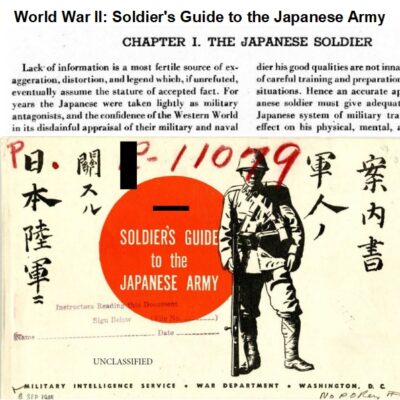

World War II: A Soldier’s Handbook on the Japanese Army
$3.94 Add to Cart -
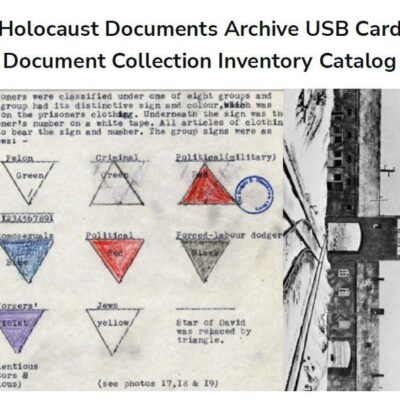
Holocaust Document Archive PDF file – Inventory Catalog of Document Collection
$3.94 Add to Cart -
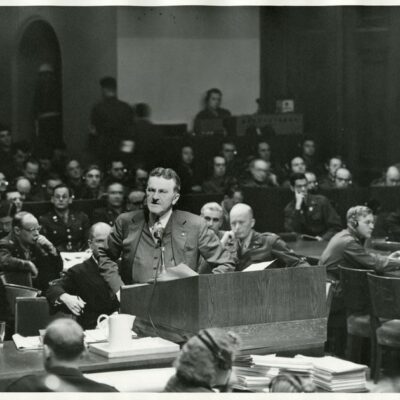
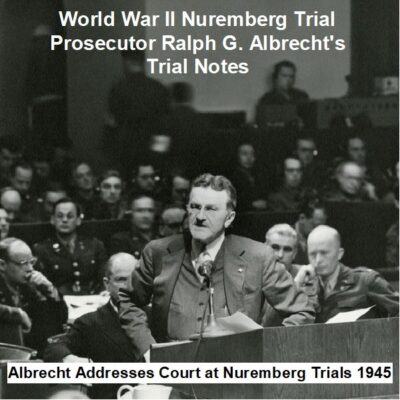
Trial Notes of Ralph G. Albrecht, Prosecutor at the Nuremberg Trials of World War II
$3.94 Add to Cart -
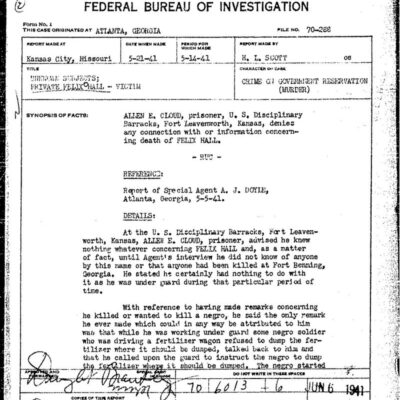
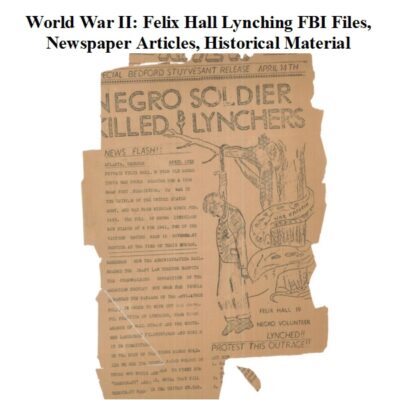
World War II: Felix Hall Lynching – FBI Files, Articles, Historical Records
$9.99 Add to Cart